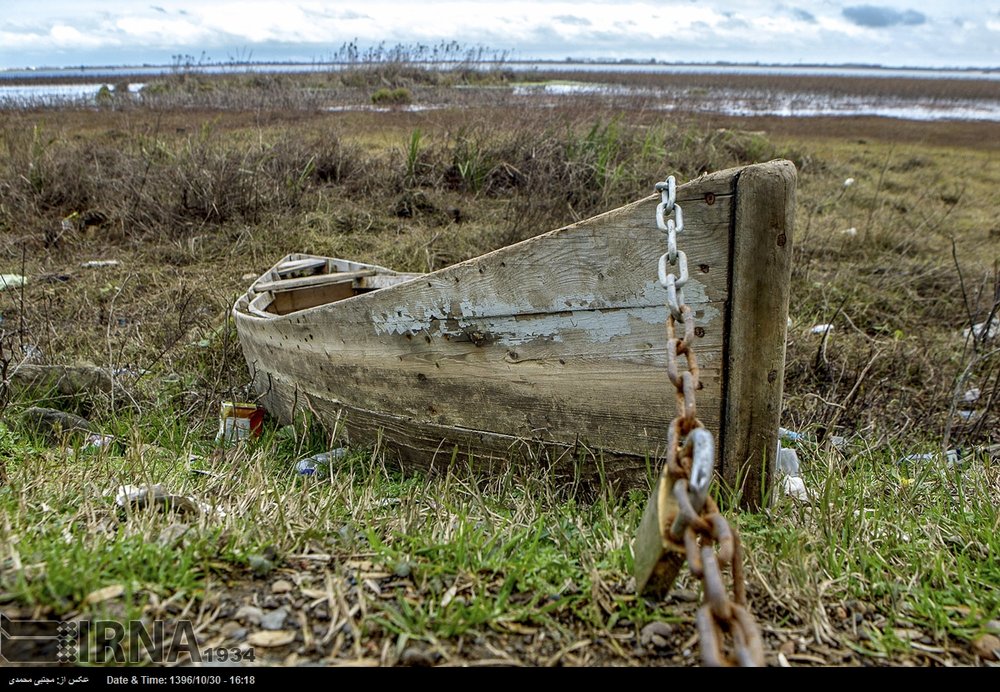On the degradation of Anzali wetland

TEHRAN – There are many reasons behind Anzali Wetland’s degradation in recent years among which one can refer to poor waste management policies and locals’ lack of knowledge regarding benefits of the wetland.
Covering more than 19,000 hectares, the wetland is located near the northern port city of Bandar Anzali, neighboring the Caspian Sea. The wetland was designated as a Ramsar site on June 23, 1975. It is fed by several rivers and separated from the Caspian Sea by a dune system. The lagoon is home to submerged and floating vegetation and also extensive reed beds. It bears international importance in terms of breeding, staging and wintering water birds.
Some believe that it takes some 10 days to visit all the sections of this vast spectacular wetland. However, this unique ecosystem is facing great threats which call for immediate attention.
Considerable amount of waste
In some part of the wetland, you can see nothing but waste, Iran daily paper quoted environmentalist Mohammad Amin Ma’soumi as saying on April 11 in a report on the wetland’s degradation.
The waste has formed a thick layer of sediment in some parts of the lagoon which makes it impossible for boats to cross, he added.
He went on to say that the wetland is like a bowl, if sediment is continuously added to it, the water will finally overlap and exit the wetland, leaving a bare land behind.
The waste and its leachate combined with the standstill water give off strong smell in some areas, he regretted.
For instance, some 150,000 tons of waste is produced and dumped in Bandar Anzali every day which lead to entering of some 90,000 liters of leachate to underground waters and the wetland, Ma’soumi noted.
And this is just the recorded volume of waste from Bandar Anzali, while waste from other cities like Rasht also enter this wetland.
Water pollution is an indispensable result of this great wave of waste which leads to decreasing the water’s oxygen level and ultimately the death of fishes residing in the lagoon, he highlighted.
Occupying wetland areas
Some sections of the wetland have drained completely and there are individuals who set fire in those regions in hope of occupying them in the future, said Armin Safdel, a social activist.
If one can plant saplings in an area for 15 years, they can own that land legally, he added.
Some 17 hectares were burnt during the previous [Iranian calendar] year 1396 (March 2017-March 2018), and fire broke out in 3 more hectares of the wetland in the early days of the New Year, which started on March 21.
Need to raise awareness
As long as locals don’t appreciate the value and effect of the wetland in their lives, these bitter environmental incidents, like littering in the wetland, will continue, Safdel said.
Locals think that the only way to make money in the wetland is through taking tourists out in boats which has resulted in plying some 3,000 illegal boats in the region, he added.
Motor boats usually produce a lot of noise which disturbs the peace of wetland, seriously harming the birds, he highlighted.
Describing bird watching as a “profitable” business, Safdel criticized locals for not paying attention to protect the wetland.
Not a long ago, most of the boats used to be propelled by paddles and as a result, birds and other animals felt more safe, the boatmen said, adding that noise pollution caused by motor boats and the music which they often playback leads to escape of birds.
Digging semi-deep wells around the wetland which means sucking its water for agricultural activities and also, deforestation are among other reasons behind the degradation trend, environmentalists believe. “Anzali wetland act as a speed bumper in times of flood and if dried, all of its neighboring regions will face many dangerous natural threats.”
The wetland is reaching a level of crisis which makes its rescue not a choice but a must, environmentalists emphasized.
Implementing comprehensive plans for improving the wetland and raising awareness of locals and tourists toward preserving this ecosystem can lead to its rescue.
MAH/MQ/MG
